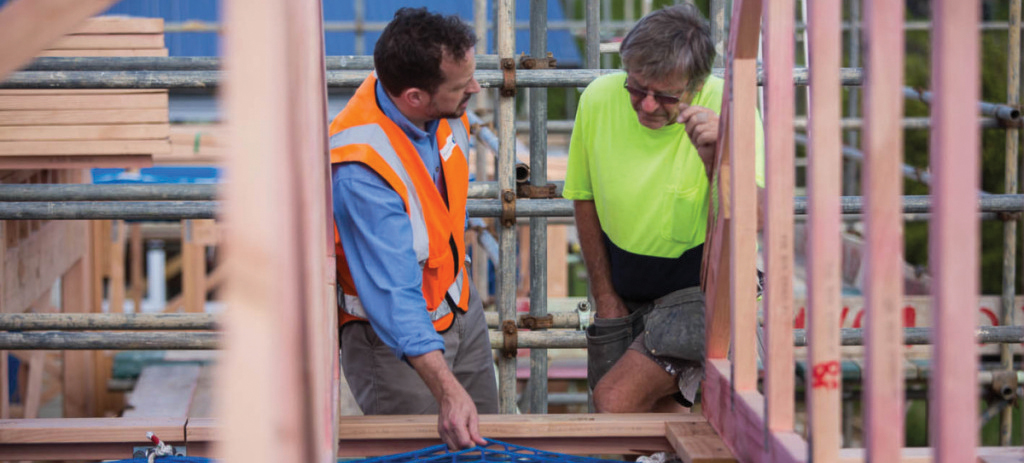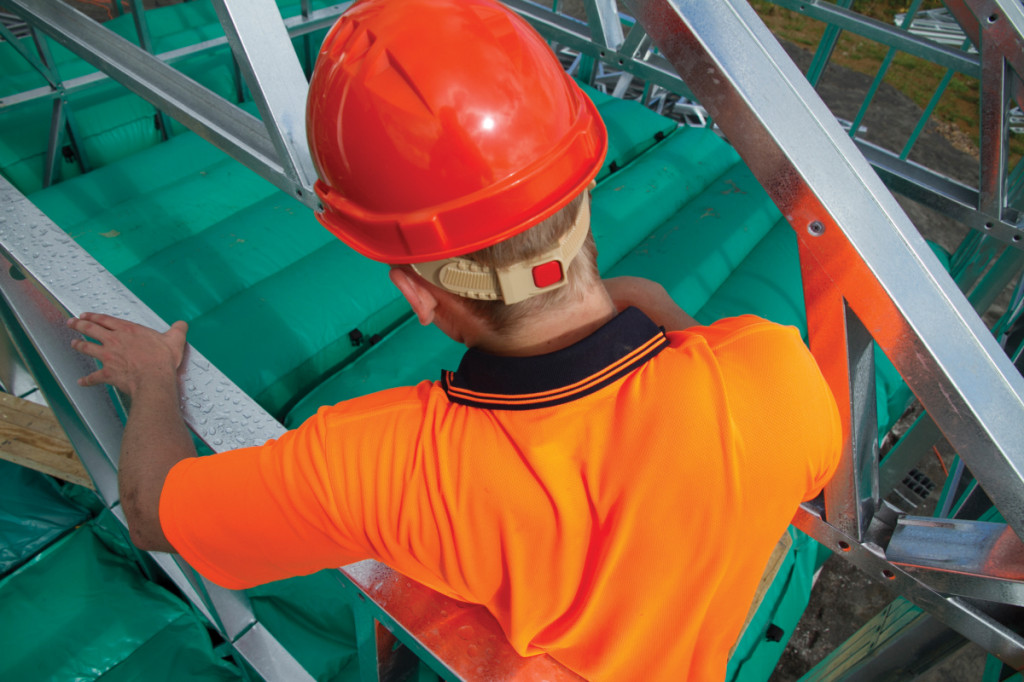Height hazard hits the headlines
03 Sep 2013, Building and housing, Featured, Prove Your Know How

The roofing industry should be alert to the hazard of fall-through when recladding roofs or installing purlins and tile support systems. A number of building sites in Christchurch had to delay work until appropriate hazard controls were put in place to avoid falling through open rafters. Do you have the right systems set up?
It’s important to know how to prevent injuries when fixing tile support systems, laying underlay, installing battens, or stripping and recladding roofs. Health and safety inspectors will look for evidence that a hazard identification process has been completed and for appropriate controls to be in place.
If a fall prevention plan and appropriate safety systems are not in place, inspectors will consider enforcement action. This includes issuing a warning or notice, or issuing an infringement fine of up to $4,000 where there is prior warning for the same or a similar issue.
“No one should walk on the roof trusses or open rafters unless a suitable ‘group control measure’ is in place to protect all workers from an internal fall
Hierarchy of controls
All site managers should follow the ‘working at height hierarchy of controls’ and put in place the best and most practicable measures to prevent a fall.
What is practicable will differ between new-build properties and strip-and-reclad roofing jobs.
However, the hazard of a fall through a roof must be controlled.
Some examples of practicable measures to prevent an internal fall into the building include:
- Boarding out the inside of the roof using timber or using proprietary decking systems to work from within the roofing structure once it is secured and stable.
- Fixing safety mesh overtop of trusses.
- Reducing the spacing between the roofing battens/purlins to no more than 500 mm.
Where it is not practicable to prevent a fall, you must provide measures that minimise the distance and consequences of a fall for everyone working on the structure – this is known as a ‘group control measure’. Two examples of doing this are:
- Installing a safety net.
- Placing air bags or bean bags inside the building under the fall area.
Purlins and tile battens
When roofs are being covered, purlins and tile battens can provide a reasonably secure foothold and fall protection provided that the following criteria are adhered to:
- The purlins are fixed to rafters set at centres not more than 500 mm.
- The purlins are a minimum size of 70 mm x 45 mm and meet the grading requirements specified in NZS3604: timber-framed buildings.
- The purlins are at least 1.2m long to ensure they span a minimum of three trusses.
- The purlins are only fixed with the recommended nails.
- The safe system of work dictates that the roofers never deliberately walk on the purlins mid-span between the trusses.
- The safe system of work dictates that the roofers always walk on the rafter line when installing the tiles and slates.
Marking/setting out
No one should walk on the roof trusses or open rafters unless a suitable ‘group control measure’ is in place to protect all workers from an internal fall. This could include safety nets, air bags or bean bags.
Marking/setting out should be done sequentially throughout the purlin installation process.
“Where it is not practicable to prevent a fall, you must provide measures that minimise the distance and consequences of a fall for everyone working on the structure
Installation
Working off a safe working platform, place the purlins to be used on top of the trusses or pass/pull them up from the ground. Then secure the lower purlins working from either an internal
or external work platform.
Secure remaining purlins sequentially up to the apex of the roof by positioning the body over the truss, making sure that there is at least one secured purlin at waist level or above to minimise the hazard of a fall.
For further information refer to the following guidance and standards:
MBIE Guidance Factsheets
- Preventing Falls from Height Factsheet 2: Selecting the right equipment for working safely at height.
- Preventing Falls from Height Factsheet 3: Short duration work at height
- Preventing Falls from Height Factsheet 4: Edge protection
- Factsheet: Caution – Ceiling battens do not provide fall protection
- Factsheet: Be safe working on roofs
Best Practice Guidelines
- Best Practice Guidelines for Working at Height
- Best Practice Guidelines for Working on Roofs
Standards
- NZS3604: Timber-framed buildings
Register to earn LBP Points Sign in




